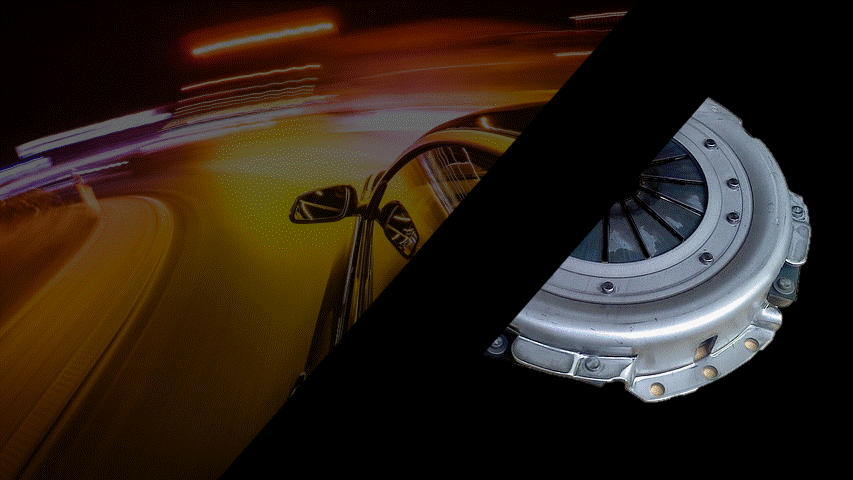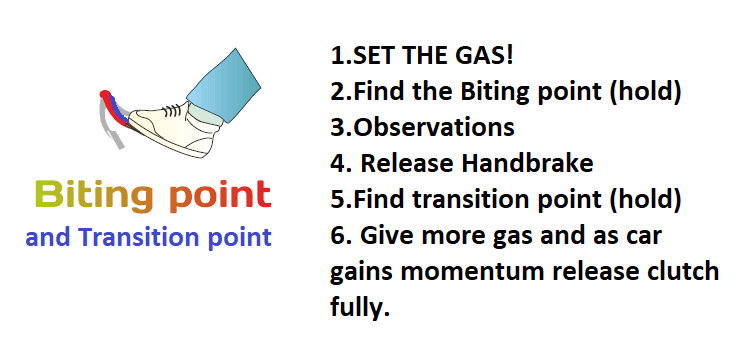

We will teach you to understand what pedal to use and when to use it, and by your own experience and trial and error, you will get to know very quickly how each pedal works, what effect each pedal has on the car, and how much pressure you will need to gain the best benefit from each of them.
Clutch Control is maybe one of the Biggest areas of concern for new drivers, but once this technique is mastered you will find you have an amazing amount of control over the whole vehicle.
Some instructors will only ever teach a point on raising the clutch up from the floor as the "BITING POINT"
We like to teach two separate points.
Point 1. Is the Biting point. (The Red area)
Point 2. Is the Transition point. (The Blue area)

By depressing the clutch fully and selecting a gear to get the car ready to move off, then raising the clutch to the Biting point and holding it at that point, you will find very quickly that the car is now in a state of being
"ready to go" or being "Prepared"
The biting point itself will feel like the car "wants to move" but at the true biting point the car should not be moving, it should be where it "feels" like it wants to move. If the car begins to move the pedal has been raised too much.
You can then carry out effective observations around the extremes of the car to ensure that it is safe to move off.
Once these observations have been carried out, you should then be able to release the hand brake (parking brake) and raise the clutch about the thickness of a one pound coin.
As you are raising the clutch to the Transition Point, you'll also want to start adding some gas (pressing the accelerator pedal) This will increase the revs of the engine and help assist with the moving off of the car, and minimise the risk of the car stalling.
You will need to then hold your foot steady at that position until the car has gained some momentum.
Once some momentum has been acquired you can release the clutch all the way up and remove your foot from it. Usually by the time the car has reached 5mph it's quite safe to come off the clutch fully unless you are moving off on a hill and you might want to gain a little more speed before fully coming off it.
Errors in clutch control that cause stalling, jumpy starts, slow moving off.
1. By raising the clutch past the biting point without releasing the hand brake, there is a high possibility that the car will stall and the engine will stop.
2. By raising the clutch to the Biting point, releasing the hand brake and then jumping of the remainder of the travel of the clutch too soon, the car will also probably stall.
3. By raising the clutch to the Biting point, releasing the handbrake and not easing the clutch up slowly after you have found the Transition point, you may find the car will start to bunny hop, and the more it hops, the worse it tends to get as your foot will start bouncing on and off the pedal as well.
4. By raising the clutch to the Biting point, holding it, releasing the handbrake and then finding the transition point but not then raising the clutch up any further once the car has started to gain momentum, you will find the car does not gain any further speed and you will pull away very slowly.
This is commonly referred to as "Riding the Clutch".
This over time will cause damage to the clutch itself.
Practice doing a move off and stop time and time again until you get a feel of how the car responds in different circumstance. The more you practice the better you will get at it and the less any anxiety will be when moving off at a set of traffic light, joining a new road, or entering a roundabout from stationary.